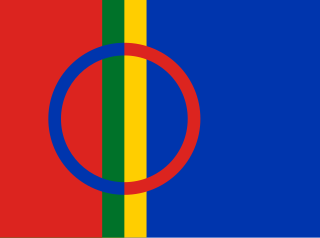
The Sámi are the traditionally Sámi-speaking people inhabiting the region of Sápmi, which today encompasses large northern parts of Norway, Sweden, Finland, and of the Kola Peninsula in Russia. The region of Sápmi was formerly known as Lapland, and the Sámi have historically been known in English as Lapps or Laplanders, but these terms are regarded as offensive by the Sámi, who prefer the area's name in their own languages, e.g. Northern Sámi Sápmi. Their traditional languages are the Sámi languages, which are classified as a branch of the Uralic language family.
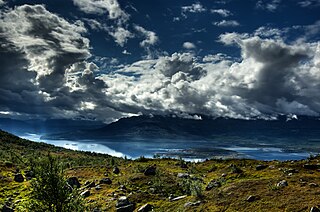
Norrbotten County is the northernmost county or län of Sweden. It is also the largest county by land area, almost a quarter of Sweden's total area. It shares borders with Västerbotten County to the southwest, the Gulf of Bothnia to the southeast, the counties of Nordland and Troms og Finnmark in Norway to the northwest, and Lapland Province in Finland to the northeast.

Kiruna is the northernmost city in Sweden, situated in the province of Lapland. It had 17,002 inhabitants in 2016 and is the seat of Kiruna Municipality in Norrbotten County. The city was originally built in the 1890s to serve the Kiruna Mine.
A joik or yoik is a traditional form of song in Sámi music performed by the Sámi people of Sapmi in Northern Europe. A performer of joik is called a joikaaja, a joiker or jojkare. Originally, joik referred to only one of several Sami singing styles, but in English the word is often used to refer to all types of traditional Sami singing. As an art form, each joik is meant to reflect or evoke a person, animal, or place..

A fell is a high and barren landscape feature, such as a mountain or moor-covered hill. The term is most often employed in Fennoscandia, Iceland, the Isle of Man, parts of northern England, and Scotland.

Traditional Sámi spiritual practices and beliefs are based on a type of animism, polytheism, and what anthropologists may consider shamanism. The religious traditions can vary considerably from region to region within Sápmi.
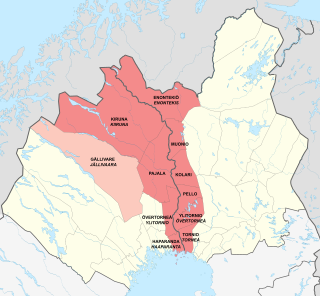
Meänmaa, or sometimes Torne Valley or Torne River Valley lies at the border of Sweden and Finland. It is named after the Torne River flowing through the valley and into the Gulf of Bothnia. Geographically the townships and municipalities that make up the area are Haparanda, Övertorneå, Pajala and Kiruna in Sweden, and Tornio, Ylitornio, Pello, Kolari, Muonio and Enontekiö in Finland. Culturally the highland Swedish municipality Gällivare is sometimes also considered part of Meänmaa due to the large share of Meänkieli-speaking population in it. Torne Valley should not be confused with Torne Valley Sub-region.

The siida is a Sámi local community that has existed from time immemorial. A siida, or 'reindeer pastoralistic district,' is a Sámi reindeer foraging area, a group for reindeer herding and a corporation working for the economic benefit of its members. The reindeer-herding siida has formed as an adaptation of ancient siida principles to large-scale nomadic reindeer herding. It is termed a sameby in Swedish law, reinbeitedistrikt in Norwegian law, and paliskunta in Finnish law. The pastoralist organisation differs slightly between countries, except in Russia, where kolkhoz replaced these earlier organisations.

A Sámi drum is a shamanic ceremonial drum used by the Sámi people of Northern Europe. Sámi ceremonial drums have two main variations, both oval-shaped: a bowl drum in which the drumhead is strapped over a burl, and a frame drum in which the drumhead stretches over a thin ring of bentwood. The drumhead is fashioned from reindeer hide.
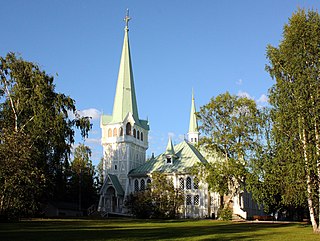
Jokkmokk is a locality and the seat of Jokkmokk Municipality in Norrbotten County, province of Lapland, Sweden, with 2,786 inhabitants in 2010. The Lule Sami name of the place means "River's Curve," due to the meandering river that runs through it. As in other towns in Lapland, the Swedish language is dominant at an official level in Jokkmokk in modern times. The settlement is just north of the Arctic Circle. Talvatissjön is located at the southern part of Jokkmokk.

Gällivare is a locality and the seat of Gällivare Municipality in Norrbotten County, province of Lapland, Sweden with 8,449 inhabitants in 2010. The town was founded in the 17th century. Together with nearby towns Malmberget and Koskullskulle it forms a conurbation with some 15,000 inhabitants. This conurbation is the second northernmost significant urban area of Sweden after Kiruna.
The dislocation of Sámi people was a process in which reindeer herding indigenous Sámi people were forcibly dislocated from Jukkasjärvi and Karesuando to areas further South in Sweden in the 1920s to 1940s. In total it included 300–400 people. After Russia had closed its borders, first to Norway in 1852 followed by Finland in 1888, the cross-border reindeer herding became a conflict between the countries. Guided by racist ideas of the Sámi as a dying people and reindeer herding as a dying practice, the Norwegian government worked towards colonising the North of Norway with farmers. Gradually the Sámi's rights to graze in Sweden during wintertime and in Norway in the summers was restricted. The start of the dislocation was the reindeer grazing convention of 1919, which drastically limited the amount of reindeer within Norway. In practice, it meant that the Sámi were robbed of their homes and grazing land within Norway. Following this, the county administrative board by various means of force made Sámi families relocate from their homes to new unknown lands further South.
Northern Military District was a Swedish military district, a command of the Swedish Armed Forces that had operational control over Northern Sweden, for most time of its existence corresponding to the area covered by the counties of Västernorrland, Jämtland, Västerbotten and Norrbotten. The headquarters of Milo N were located in Boden.

The Norrbotten Brigade, also NMekB 19, is a Swedish Army mechanized brigade located in the province of Norrbotten, active since 2022. It was previously active from 1949 to 2000. The brigade is located at Boden Garrison, Norrbotten Regiment in Boden.

Ájtte, the Swedish Mountain and Sami Museum, is a cultural and natural history museum in Jokkmokk in Lapland, Sweden.

The forest Sami are Sami people who live in the woods and who, unlike the reindeer-herding Sami people, do not move up into the fells during the summer season. Historically, there have been forest Sami in Sweden in the area ranging from northern Ångermanland to the far north. In the early 1600s the term granlapp was also used to refer to the Sami people who paid taxes only to Sweden, compared to the semi-nomadic fell Sami, who, since they worked in the fells that straddled the Swedish-Norwegian border, had to pay taxes to both countries. When Ernst Manker studied the life of the forest Sami in the early 20th century, nearly all of their habitations had been abandoned. Only one forest Sami village remained, in Malå in Västerbotten, an area known as Stenundslandet in Anundsjö.

Johan Tirén was a Swedish painter who specialized in scenes of the rural life in Northern Sweden.

Nutukas, finnesko, or simply Sámi boots are traditional Sámi winter footwear made of reindeer hide. Because they are soft, the nutukas will not freeze as solidly as thick boot leather, making them relatively easy to put on after overnight exposure to subzero temperatures. From 1890, they are regularly mentioned in accounts of polar travel.
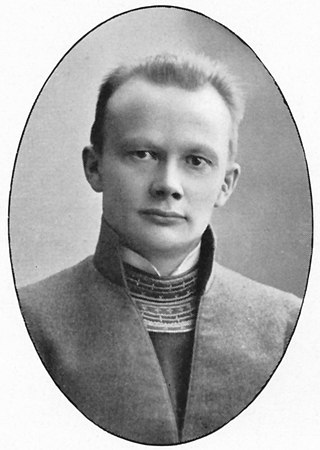
Torkel Tomasson was a Sámi newspaper editor and public figure who worked to promote Sámi identity and rights.
















